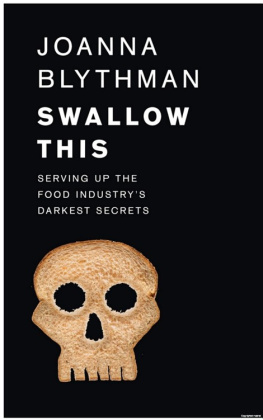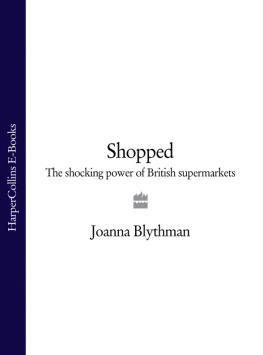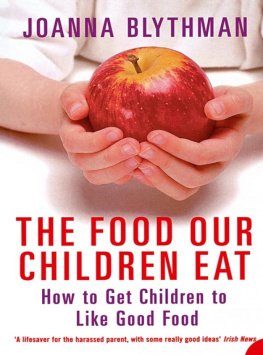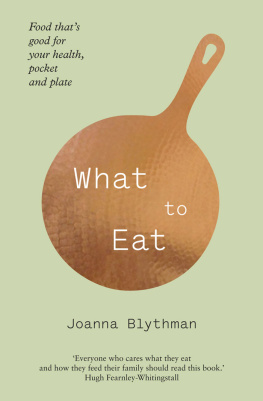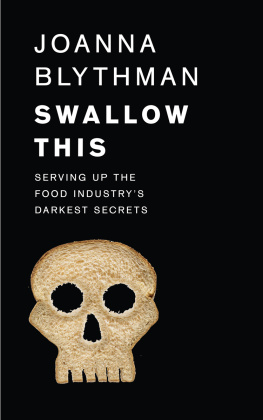All rights reserved under International and Pan-American Copyright Conventions. By payment of the required fees, you have been granted the non-exclusive, non-transferable right to access and read the text of this e-book on screen. No part of this text may be reproduced, transmitted, downloaded, decompiled, reverse engineered, or stored in or introduced into any information storage retrieval system, in any form or by any means, whether electronic or mechanical, now known or hereinafter invented, without the express written permission of HarperCollins e-books.
When you pop into an M&S food hall, you need a will of iron to walk past the in-store bakery without buying anything. After you have pushed your trolley down those sterile, odour-free, teeth-chatteringly cold aisles, past shelves banked high with convenience food in boxes, who isnt going to be seduced? The pleasing contours and golden hues of the assorted Viennoiserie, traybakes, muffins, tea breads, pastries and loaves create a visual architecture that primes us to expect real food in a fresh-from-the-oven state. That captivating aroma curls its way under the nose, stimulating the salivary glands, engendering feel-good thoughts of happy homes, nurturing childhoods and reassuring, dependable everyday pleasures. With its base notes of yeasty bread, buttery croissants and crusty scones, and its top notes of cinnamon, fragrant apple, vanilla and chocolate, you would make a fortune if you could distil and bottle this heart-melting scent: Parfum de Home Baking, the nations comfort blanket.
Nowadays, many of the in-store bakeries at M&S are state-of-the-art. This is relatively recent. By the chains own admission, they used to be behind the market in terms of sales and volume and were viewed as clinical, uninspiring, out of touch and with below-average food-hall profitability. They looked utilitarian, just like the standard supermarket in-store bakery where any come-hither scents created must compete with the brash odours of the washing powder aisle, but then they were revamped. Now they are smartly kitted out with gleaming white-tiled walls, stylish pendant lights, and a floor that looks like timeless limestone. Everything on sale is displayed unwrapped in rustic wicker trays, in baskets resting on wooden crates, or on jute sacks; this creates a more informal homespun look and encourages you to help yourself. Staff wear chefs whites under a linen-like apron, and a smart Nehru-style black cap, a mood board design ethos that combines the sophistication of Dean & DeLuca-style Manhattan deli chic with country barn.
The point of all this effort is to create theatre in the food hall, drive purchase of other items (that is, get customers to buy more of everything else), and help establish M&Ss food credentials as a specialist food retailer. This strategy has paid off handsomely. Profitability has tripled as the bakeries have seen record-breaking like-for-like growth.
These bakeries look and smell so good, you might just think Why on earth would I bother to bake? Even for dedicated home bakers who sit glued to the latest round of The Great British Bake Off for nights on end, it is terribly tempting to hang up your pinny and just graze from the in-store bakery. After all, M&S is widely held to be a cut above the other chains, and those loaves, cakes, buns and muffins do look like something an Earth-goddess-mum-come-craft-baker would knock up and with all the associated simple virtues. Strategically situated near the shelves of pre-wrapped bakery goods, these goodies seem, by comparison, positively homely and low-tech. But are they?
While all baked goods not made in an in-store bakery must, by law, come labelled with a complete list of every ingredient and additive in the mix, so that if you are interested, you can see what you will be eating, the same requirement does not apply to anything sold from in-store bakeries. Still, youd think that progressive retailers would offer such information voluntarily.
I tried to find the ingredient listings for M&S in-store bakery products online. In the About our food sections of the M&S website it simply said As some of our foods are freshly prepared in our stores, this page can help you find out the nutritional content. It gave a breakdown for everything from the walnut loaf to the pecan and almond Danish pastry how much fat, protein, salt, calories and so on in one of those supposedly illuminating charts that purport to be the ultimate exercise in transparency, but which are more or less incomprehensible to anyone who isnt a professional dietician. Fulsome nutritional details, but no sign of an ingredient listing.
I then asked the M&S press centre to provide me with the information, and got back a civil, but unilluminating response:
Im afraid as we dont sell food online (other than our food to order), we dont have a central database that I can direct you to, so its a bit tricky. If you could let me know the specific bakery products youd like the ingredients for, I can certainly try to find out for you.
And was it just me, or was there a rising note of defensiveness in the final line:
Would you also mind giving me a bit more info about the book whats the angle youre looking at?
It sounded as though it could be like pulling teeth to extract ingredients lists via the regular press channels, so on a quiet Monday morning, I decided to visit an M&S in-store bakery in person, as a member of the public, thinking that this would be a more direct way to get an answer. I asked one of the women who was working away behind the baskets of bread and buns if I could see the ingredients listing for the products on sale. She looked a bit perplexed; this was clearly not a question she had been trained to answer. Still, trying to be helpful, she showed me information about allergens (soya, eggs, peanuts, etc.) and yet again, offered up that already familiar nutritional information. But, she said, there wasnt a list of ingredients as such, only a behind-the-counter product guide for the bakery staffs guidance. It did list ingredients by product, but she wasnt sure if she could let me see it. Why was I asking anyway? Knowing whats in your food should be a matter of public record, and the relevant information readily available, but it was beginning to feel like an off-the-wall, Freedom of Information Act request. Eventually, though I managed to see a copy of the manual.

